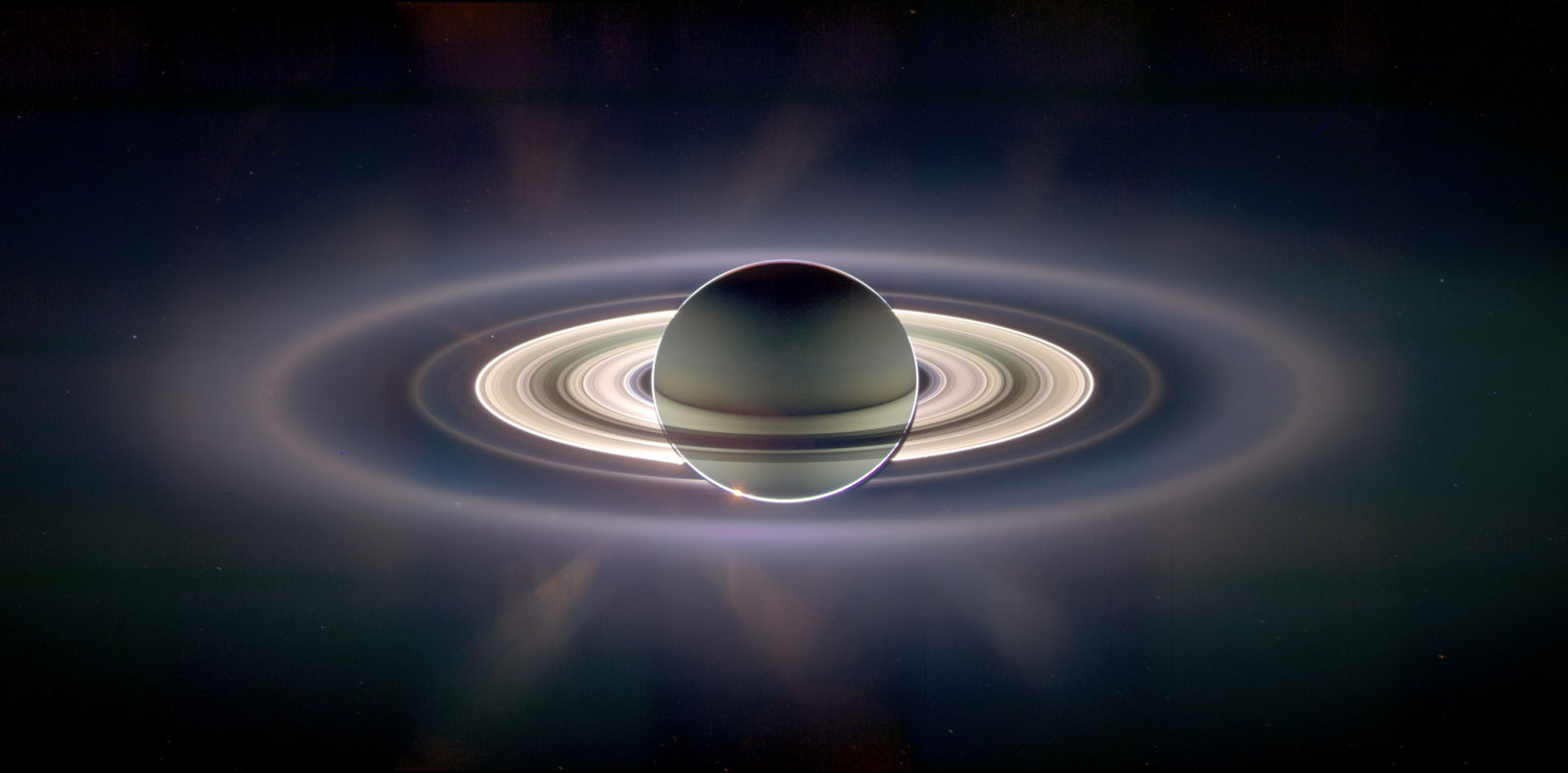A dusty plasma (or complex plasma) is a plasma containing nanometer or micrometer-sized particles suspended in it. Dust particles may be charged and the plasma and particles behave as a plasma [1] [2], following electromagnetic laws for particle up to about 10 nm (or 100 nm if large charges are present). Dust particles may acrete into larger particles resulting in “grain plasmas”. Dusty plasmas can also be the dominant current carrier.[3]. They are of special interest, since they can form liquid and crystalline states, plasma crystals, and the dynamics of the charged dust grains are directly observable.[4]
Examples of dusty plasmas include comets, planetary rings, exposed dusty surfaces, and the zodiacal dust cloud.[5], and dust in interplanetary space, interstellar and circumstellar clouds.[6]
Dusty plasmas are interesting because presence of particles significantly alters the charged particle equilibrium leading to different phenomena. It is field of current research. Electrostatic coupling between the grains can vary over a wide range so that the states of the dusty plasma can change from weakly coupled (gaseous) to crystalline. Such plasmas are of interest as a non-Hamiltonian system of interacting particles and as a means to study generic fundamental physics of self-organization, pattern formation, phase transitions, and scaling.
Contents
Characteristics
The temperature of dust in a plasma may be quite different from its environoment. For example:
| Dust plasma component | Temperature |
|---|---|
| Dust temperature | 10 K |
| Molecular temperature | 100 K |
| Ion temperature | 1,000 K |
| Electron temperature | 10,000 K |
The electric potential of dust particles is typically 1–10 V (positive or negative). The potential is usually negative because the electrons are more mobile than the ions. The physics is essentially that of a Langmuir probe that draws no net current, including formation of a Debye sheath with a thickness of a few times the Debye length. If the electrons charging the dust grains are relativistic, then the dust may charge to several kilovolts [1]. Field emission, which tends to reduce the negative potential, can be important due to the small size of the particles. The photoelectric effect and the impact of positive ions may actually result in a positive potential of the dust particles.
Dynamics
-
- See also: Gravitoelectrodynamics
The motion of solid particles in a plasma follows the momentum equation for ions and electrons:[7]
where m, q are the mass and charge of the particle, g is the gravitation acceleration, mvcv is due to viscosity, and f respresents all other forces including radiation pressure. q (E + v x B) is the Lorentz force, where E is the electric field, v is the velocity and B is the magnetic field. (See also the the basic equation governing the dynamics of a charged dust grain of mass in the planetocentric inertial frame)[8]
Then depending in the size of the particle, there are four categories:
- Very small particles, where q (E + v × B) dominates over mg.
- Small grains, where q/m ≈ √G, and plasma still plays a major role in the dynamics.
- Large grains, where the electromagnetic term is negligible, and the particles are referred to as grains. Their motion is determined by gravity and viscosity, and the equation of motion becomes mvcv = mg.
- Large solid bodies. In centimeter and meter-sized bodies, viscosity may cause significant perturbations that can change an orbit. In kilometer-sized (or more) bodies, gravity and inertia dominate the motion.
Notes
- ↑ 1.0 1.1 Mendis, D. A., “Dust in cosmic plasma environments” FULL TEXT (1979) Astrophysics and Space Science, vol. 65, no. 1, Sept. 1979, p. 5-12 (Lunar and Planetary Institute, Workshop on Thermodynamics and Kinetics of Dust Formation in the Space Medium, Houston, Tex., Sept. 6-8, 1978.) PEER REVIEWED
- ↑ Hill, J. R.; Mendis, D. A., “Charged dust in the outer planetary magnetospheres. I – Physical and dynamical processes” FULL TEXT (1979) Moon and the Planets, vol. 21, Aug. 1979, p. 3-16.
- ↑ Cramer, N. F.; Vladimirov, S. V., “Space charge modes in the magnetized discharge with dust”, New Vistas in Dusty Plasmas: Fourth International Conference on the Physics of Dusty Plasmas. AIP Conference Proceedings, Volume 799, pp. 561-564 (2005) (Abstract)
- ↑ “Complex Plasmas“, School of Electrical Engineering, KTH Royal Institute of Technology (retrieved 26 Jun 2010)
- ↑ Mihaly Horanyi and Colin J. Mitchell, “Dusty Plasmas in Space: 6. Saturn’s Rings: A Dusty Plasma Laboratory” (2006) Journal of Plasma and Fusion Research, Vol.82, No.2, pages 98-102 PEER REVIEWED
- ↑ P. K. Shukla, A. A. Mamun, “Introduction to Dusty Plasma Physics” (2002) CRC Press, 450 pages, ISBN 075030653X (page 8)
- ↑ A. L. Peratt, Physics of the Plasma Universe, Appendix C. Dusty and Grain Plasmas, (Springer, 1992) ISBN 0-387-97575-6
- ↑ D. A. Mendis, M. Rosenberg, “Cosmic Dusty Plasmas“,PEER REVIEWEDFULL TEXT Annual Review of Astronomy and Astrophysics, Volume 32, 1994, pp. 419-463, see Sec.4 “Dynamics”
References
- Dusty Plasmas: Physics, Chemistry and Technological Impacts in Plasma Processing, John Wiley & Sons Ltd.
- Merlino, Robert L., “Experimental Investigations of Dusty Plasmas” (2005) (PDF preprint); highlights some of the history of laboratory experiments in dusty plasmas,
